The Early College Experience Economics program (https://ece.uconn.edu/) held its annual workshop this fall for 30 Connecticut high school economics teachers who are teaching UConn’s Principles of Microeconomics (ECON 1201), Principles of Macroeconomics (ECON 1202) and/or Essentials of Economics (ECON 1000).
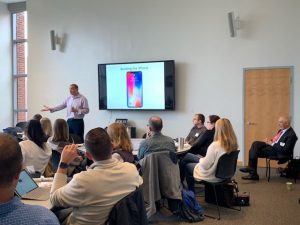
Leading off the workshop was Professor Mike Shor, presenting “Patent Holdup” in which he explained the limits monopoly power conveyed by patents. The complementary relationships among patents and the price determination of purchasing or licensing of patents. He went on to explain the idea of the patent hold up. He also provided the workshop participants with a classroom exercise in which students discover how patents are priced.

There followed a presentation by Professor Natalia Smirnova, “Using Data in the Classroom: FRED database.” Professor Smirnova demonstrated several empirical uses of the St. Louis Federal Reserve Bank’s FRED database including both Macro and Micro economic examples.
Professor William Alpert presented a lunch time talk about the “Perils and Pitfalls of Prediction” highlighting the famine predictions of Paul Ehrlich for the 1980 (100’s of millions die) and the failed predictions of The Club of Rome from 1973. Professor Alpert also “predicted” the rise to more than 600 million in the number of horses in the United States if 18th Century trends had continued, assuming no alternative means of transportation.

Professor Steven Lanza then followed up with a presentation entitled “Rediscovering Lost Arts: Economic Index Numbers” in which he stressed the importance of index numbers and the biases in those numbers. He also demonstrated how to calculate them using data that is easy to access and readily available.
Professor Nishith Prakash rendered the concluding presentation concerning a natural experiment concerning the harassment. In India 79% of women living in cities have experienced harassment in public spaces. Professor Prakash and his coauthors set out to determine the effect of street patrolling that targets harassment, on the type and frequency of incidents and women’s proactive responses. They also are trying to determine the impacts of targeting perpetrators of harassment and what drives these changes — visibility, and/or quantity of a focused taskforce?
All of the presentations were well received and the workshop was among the most successful offered by the ECE Economics program.
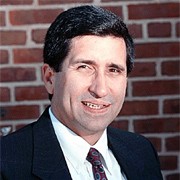 The Social Science Research Network (SSRN), a platform for dissemination of early-stage research, recently announced their all-time top ten downloaded papers in the topic Data Visualization. Oskar Harmon’s paper “Learning Tableau: A Data Visualization Tool” with Steven Batt, and Paul Tomolonis was among that list.
The Social Science Research Network (SSRN), a platform for dissemination of early-stage research, recently announced their all-time top ten downloaded papers in the topic Data Visualization. Oskar Harmon’s paper “Learning Tableau: A Data Visualization Tool” with Steven Batt, and Paul Tomolonis was among that list. The Human Capital and Economic Opportunity
The Human Capital and Economic Opportunity
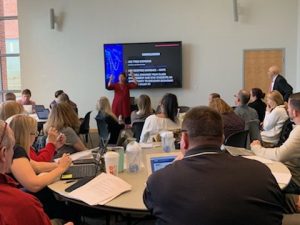
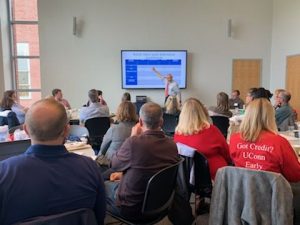
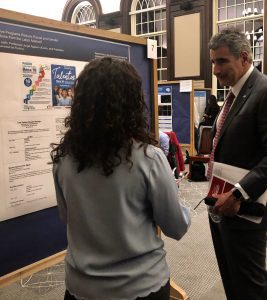 On October 30th, Economics undergraduate student Mary Vlamis presented her project ‘Can Inclusive Programs Reduce Racial and Gender Discriminations from the Labor Market?’ at the annual
On October 30th, Economics undergraduate student Mary Vlamis presented her project ‘Can Inclusive Programs Reduce Racial and Gender Discriminations from the Labor Market?’ at the annual  Jorge Agüero gave a keynote address at the 8th International Congress on Education at Ibagué, Colombia.
Jorge Agüero gave a keynote address at the 8th International Congress on Education at Ibagué, Colombia.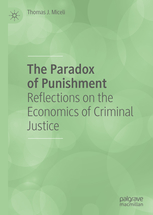 Professor Thomas Miceli has published The Paradox of Punishment: Reflections on the Economics of Criminal Justice.
Professor Thomas Miceli has published The Paradox of Punishment: Reflections on the Economics of Criminal Justice.